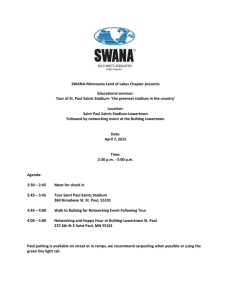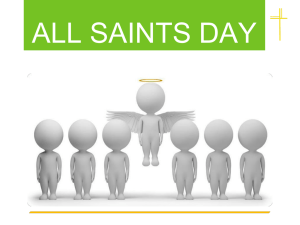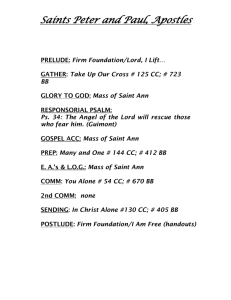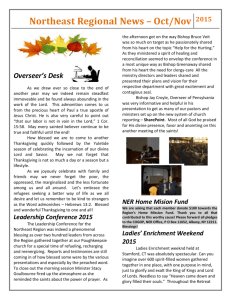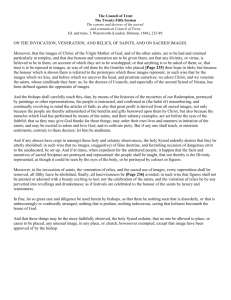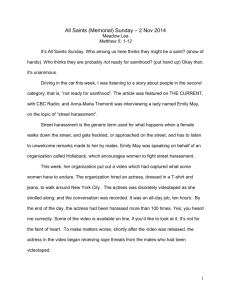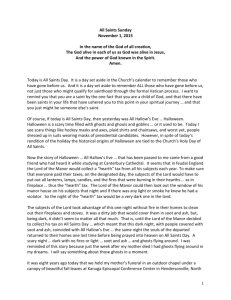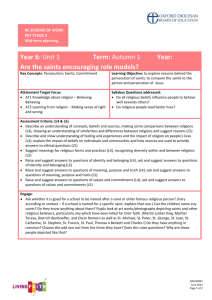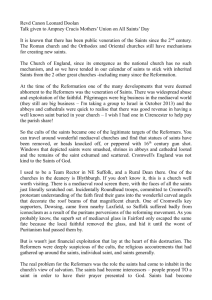2008 11 02 All Saints
advertisement
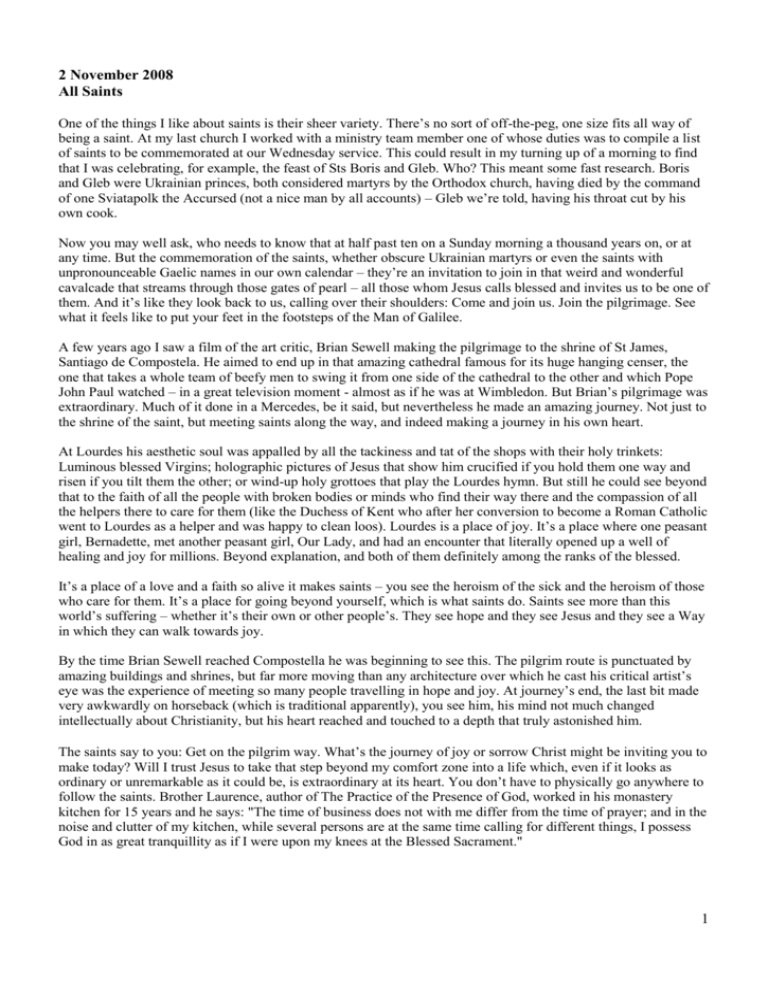
2 November 2008 All Saints One of the things I like about saints is their sheer variety. There’s no sort of off-the-peg, one size fits all way of being a saint. At my last church I worked with a ministry team member one of whose duties was to compile a list of saints to be commemorated at our Wednesday service. This could result in my turning up of a morning to find that I was celebrating, for example, the feast of Sts Boris and Gleb. Who? This meant some fast research. Boris and Gleb were Ukrainian princes, both considered martyrs by the Orthodox church, having died by the command of one Sviatapolk the Accursed (not a nice man by all accounts) – Gleb we’re told, having his throat cut by his own cook. Now you may well ask, who needs to know that at half past ten on a Sunday morning a thousand years on, or at any time. But the commemoration of the saints, whether obscure Ukrainian martyrs or even the saints with unpronounceable Gaelic names in our own calendar – they’re an invitation to join in that weird and wonderful cavalcade that streams through those gates of pearl – all those whom Jesus calls blessed and invites us to be one of them. And it’s like they look back to us, calling over their shoulders: Come and join us. Join the pilgrimage. See what it feels like to put your feet in the footsteps of the Man of Galilee. A few years ago I saw a film of the art critic, Brian Sewell making the pilgrimage to the shrine of St James, Santiago de Compostela. He aimed to end up in that amazing cathedral famous for its huge hanging censer, the one that takes a whole team of beefy men to swing it from one side of the cathedral to the other and which Pope John Paul watched – in a great television moment - almost as if he was at Wimbledon. But Brian’s pilgrimage was extraordinary. Much of it done in a Mercedes, be it said, but nevertheless he made an amazing journey. Not just to the shrine of the saint, but meeting saints along the way, and indeed making a journey in his own heart. At Lourdes his aesthetic soul was appalled by all the tackiness and tat of the shops with their holy trinkets: Luminous blessed Virgins; holographic pictures of Jesus that show him crucified if you hold them one way and risen if you tilt them the other; or wind-up holy grottoes that play the Lourdes hymn. But still he could see beyond that to the faith of all the people with broken bodies or minds who find their way there and the compassion of all the helpers there to care for them (like the Duchess of Kent who after her conversion to become a Roman Catholic went to Lourdes as a helper and was happy to clean loos). Lourdes is a place of joy. It’s a place where one peasant girl, Bernadette, met another peasant girl, Our Lady, and had an encounter that literally opened up a well of healing and joy for millions. Beyond explanation, and both of them definitely among the ranks of the blessed. It’s a place of a love and a faith so alive it makes saints – you see the heroism of the sick and the heroism of those who care for them. It’s a place for going beyond yourself, which is what saints do. Saints see more than this world’s suffering – whether it’s their own or other people’s. They see hope and they see Jesus and they see a Way in which they can walk towards joy. By the time Brian Sewell reached Compostella he was beginning to see this. The pilgrim route is punctuated by amazing buildings and shrines, but far more moving than any architecture over which he cast his critical artist’s eye was the experience of meeting so many people travelling in hope and joy. At journey’s end, the last bit made very awkwardly on horseback (which is traditional apparently), you see him, his mind not much changed intellectually about Christianity, but his heart reached and touched to a depth that truly astonished him. The saints say to you: Get on the pilgrim way. What’s the journey of joy or sorrow Christ might be inviting you to make today? Will I trust Jesus to take that step beyond my comfort zone into a life which, even if it looks as ordinary or unremarkable as it could be, is extraordinary at its heart. You don’t have to physically go anywhere to follow the saints. Brother Laurence, author of The Practice of the Presence of God, worked in his monastery kitchen for 15 years and he says: "The time of business does not with me differ from the time of prayer; and in the noise and clutter of my kitchen, while several persons are at the same time calling for different things, I possess God in as great tranquillity as if I were upon my knees at the Blessed Sacrament." 1 You can be a saint in the kitchen – and I don’t mean being Delia. And you can be a saint in the lion’s den of worldly power if that’s where God takes you. Like Martin Luther King who died forty years ago, a man who stood in the heart of Washington and said: “I have dream” and a million hearts rose and recognised his dream and shared it and thanked God for his voice and his vision and still do. Ukrainian princes and peasant girls, kitchen saints and political prophets, we need them all and they look strangely like us because they show us that any of us can shine like they have, shine like they do. They say, jump in, travel, even if the travelling’s in your heart; be open to being reshaped and turned upside down and emptied until you know what it is truly like to walk with God, on a journey where the signposts may be few and the map not always easy to read but where there are joys beyond describing. Amen. 2

